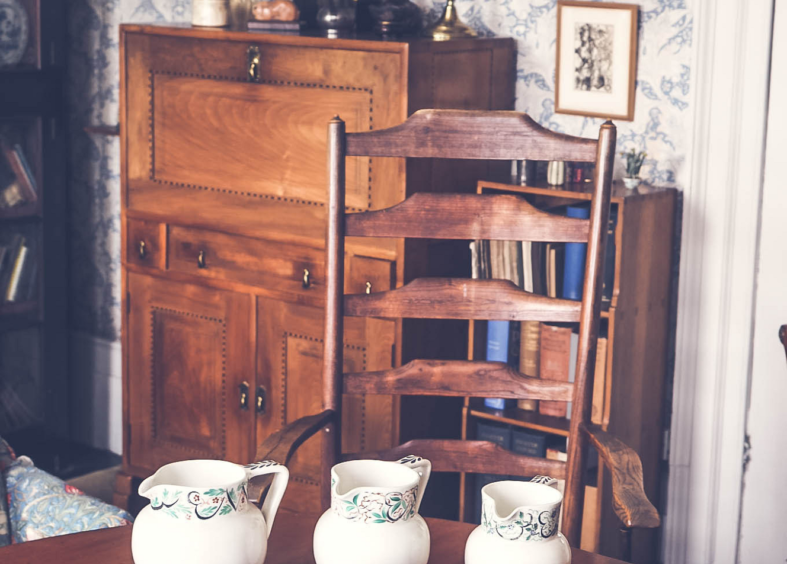The Chair and the Bodger

The history and enduring appeal of the Ladderback chair
There is at 7 Hammersmith Terrace, once the home of Emery Walker, Victorian photographer and legendary printer, a Ladderback chair. However, as you can discover at an online talk on Wednesday 2nd December, this is no ordinary chair.
The Ladderback and its maker, Philip Clissett, came to symbolise an idealised past that pre-dated the dehumanised production lines of the industrial revolution. But could this iconic part of British design history have been made by a bodger?
Linked to the chair, to Clissett and to the Cotswold craftsmen of Pinbury and Sapperton, was the romantic notion that this chair could be made in a single day from scratch, from the chopping down of the ash tree to completing the complex woven willow seat. The person capable of such a feat was, so the narrative went, someone known as a ‘bodger’.
Philip Clissett was born in Birtsmorton, Worcestershire into a long line of chairmakers dating back to the mid-1750s. By continuing to work with the ancient tools of the craft such as pole lathes, axes, saws, adzes and a spoke shave-like drawknife, Clissett embodied this rose-tinted vision of a past without organised and mechanised labour.
Various members of the Arts & Crafts Movement set out to learn how to make this iconic chair, notably, the architect, designer and Arts & Crafts purist, Ernest Gimson.
Gavin Shreeve, a volunteer guide from Emery Walker’s House will explain how it is one of many fine artefacts in the house made by Cotswold-based members of the Arts & Crafts movement who aimed to emulate the life and work practises of medieval peasant communities.
This live, interactive talk is part of a programme of monthly events via Zoom. Please prebook via the link below.
